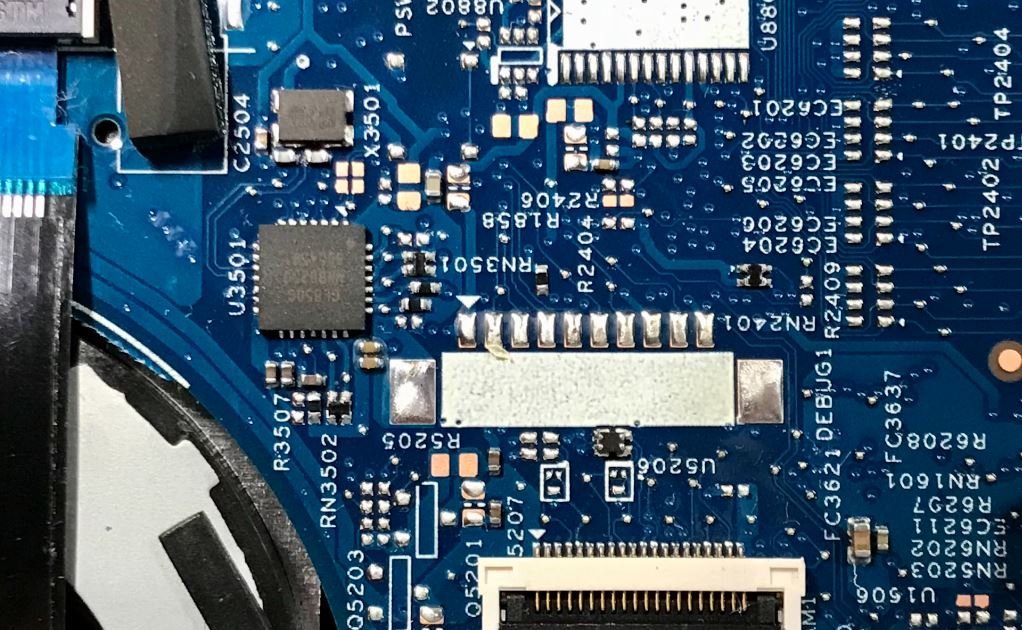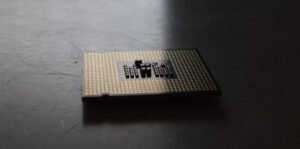Neural Network of the Brain
The neural network of the brain is a complex and intricate system that enables various cognitive functions and behaviors. Understanding how this network operates can provide valuable insights into neuroscience and artificial intelligence.
Key Takeaways
- The neural network of the brain is responsible for cognitive functions and behaviors.
- Understanding the brain’s neural network is valuable in the fields of neuroscience and artificial intelligence.
- Neural networks consist of interconnected neurons that process and transmit information.
- The brain’s neural network can adapt and change through a process called plasticity.
The neural network of the brain consists of interconnected neurons that communicate through electrical and chemical signals. These neurons process and transmit information throughout the brain and enable various cognitive functions such as perception, memory, and decision-making. It is through the neural network that our thoughts, emotions, and actions arise.
Neural networks consist of interconnected neurons that process and transmit information.
One interesting characteristic of the brain’s neural network is its ability to adapt and change. This phenomenon, known as plasticity, allows the neural connections to be strengthened or weakened based on experience and learning. Plasticity is a fundamental mechanism underlying the brain’s ability to learn new skills, recover from injuries, and even reorganize itself after a stroke or other neurological disorders.
Plasticity is a fundamental mechanism that allows the brain to learn new skills and recover from injuries.
The Structure of the Neural Network
The neural network of the brain is composed of billions of neurons, each connected to thousands of other neurons. These connections form complex pathways, often referred to as neural circuits. Neural circuits are specialized for specific functions, such as recognizing faces, processing emotions, or controlling movement.
Neurons communicate with each other through synapses, which are specialized structures that allow the transmission of electrical and chemical signals. When an electrical impulse reaches a synapse, it triggers the release of neurotransmitters, which bind to receptors on the adjacent neuron, transmitting the signal. This process of communication between neurons is the basis of information processing in the brain.
Neurons communicate through synapses, transmitting electrical and chemical signals.
Plasticity and Learning
Plasticity plays a crucial role in learning and memory. When we learn something new, such as a new language or a musical instrument, the neural connections associated with that skill are strengthened through repeated practice and reinforcement. This process, known as long-term potentiation, enhances the efficiency of information transmission in the neural network.
Furthermore, plasticity enables the brain to adapt to changes in the environment. For example, when a certain brain area is damaged, neighboring areas can reorganize themselves to compensate for the loss of function. This remarkable flexibility of the brain’s neural network helps in the rehabilitation of patients with brain injuries or neurological disorders.
Through plasticity, the brain can adapt to changes and compensate for lost functions.
Tables
| Function | Brain Area |
|---|---|
| Visual Perception | Occipital Lobe |
| Language Processing | Broca’s Area, Wernicke’s Area |
| Movement Control | Motor Cortex |
| Neurotransmitter | Function |
|---|---|
| Dopamine | Reward and motivation |
| Serotonin | Mood regulation, sleep |
| Acetylcholine | Learning and memory |
| Disease | Associated Neurotransmitter |
|---|---|
| Parkinson’s Disease | Dopamine |
| Depression | Serotonin |
| Alzheimer’s Disease | Acetylcholine |
The Future of Understanding Neural Networks
Studying the neural network of the brain is a field of ongoing research, with scientists continuously uncovering new insights. Advancements in technology and imaging techniques have allowed for more detailed examination of the brain’s structure and function. This knowledge is not only important for understanding the human mind but also for advancing artificial intelligence algorithms.
By gaining a deeper understanding of how the brain’s neural network operates, researchers can develop more sophisticated artificial neural networks that mimic the brain’s abilities, leading to advancements in machine learning and cognitive computing.
Overall, the neural network of the brain is a fascinating and complex system that underlies our cognitive functions and behaviors. It is through the intricate connections between neurons that our thoughts, memories, and actions are formed. The study of neural networks holds immense potential for further discoveries and advancements in fields such as neuroscience, psychology, and artificial intelligence.

Common Misconceptions
Neural Networks are Similar to Computer Networks
One common misconception people have about neural networks in the brain is that they function in a similar way to computer networks. However, this is not the case.
- Neural networks are made up of neurons, while computer networks consist of interconnected devices.
- Neural networks rely on electrical signals and chemical neurotransmitters for communication, while computer networks use data packets.
- Neural networks in the brain are highly adaptable and capable of learning, unlike computer networks which require explicit programming.
Only Certain Regions of the Brain Have Neural Networks
Another misconception is that neural networks only exist in specific regions of the brain. In reality, neural networks are present throughout the entire brain.
- Neural networks exist in areas responsible for sensory perception, movement control, memory, and even in regions associated with emotions.
- These networks connect different areas of the brain, allowing for the integration and processing of information.
- Each neural network specializes in a particular function, but they work together to support overall brain function.
The Brain’s Neural Network is Similar to Artificial Neural Networks
Many people believe that the neural network of the brain functions similarly to artificial neural networks used in machine learning. However, there are significant differences between the two.
- In artificial neural networks, the connections between nodes are fixed and predetermined, whereas the connections in the brain are dynamic and constantly changing.
- The brain’s neural network operates in parallel, allowing for simultaneous processing of multiple inputs, while artificial neural networks typically operate sequentially.
- The brain’s neural network is far more complex and capable of sophisticated computations compared to artificial neural networks.
Brain Networks Work Independently
Another misconception is that different neural networks in the brain work independently of each other. However, the brain’s networks are highly interconnected and communicate with each other extensively.
- Neural networks collaborate to process and integrate information, combining inputs from various areas of the brain.
- For example, networks responsible for vision and those related to memory may interact to recognize and remember visual objects.
- Damage to one network can affect the functioning of others, showcasing their interdependence.
Neural Networks Never Change
Lastly, a misconception many people have is that neural networks in the brain are fixed and unchangeable. In reality, the brain’s networks are highly malleable and capable of adapting throughout life.
- Neural networks can strengthen or weaken their connections based on learning experiences and environmental influences.
- Plasticity allows the brain’s networks to reorganize themselves in response to injuries or changes in sensory inputs.
- Learning and practicing new skills can lead to the formation of new neural pathways within existing networks or the creation of entirely new networks.

Mapping of Key Brain Regions
The human brain is a complex organ comprised of various regions, each responsible for unique functions. This table highlights some of the key regions and their associated roles in cognitive processes.
| Brain Region | Function |
|---|---|
| Frontal Lobe | Controls decision-making and problem-solving |
| Occipital Lobe | Processing visual information |
| Temporal Lobe | Aids in auditory processing and memory |
| Parietal Lobe | Enables perception of touch and spatial awareness |
| Cerebellum | Regulates coordination and balance |
Neurotransmitters and Their Functions
Neurotransmitters are chemical messengers that transmit signals across neural synapses. Here, we examine various neurotransmitters and their specific functions within the brain.
| Neurotransmitter | Function |
|---|---|
| Dopamine | Involved in reward and pleasure |
| Glutamate | Enhances signal transmission and learning |
| GABA | Inhibitory neurotransmitter, promoting relaxation |
| Serotonin | Regulates mood and sleep patterns |
| Acetylcholine | Supports learning and memory |
Interconnected Neural Pathways
The brain’s neural pathways facilitate communication between different regions of the brain. This table outlines some important neural pathways and their corresponding functions.
| Neural Pathway | Function |
|---|---|
| Corpus Callosum | Coordinates communication between brain hemispheres |
| Arcuate Fasciculus | Aids in language processing and comprehension |
| Dorsal Stream | Supports visual spatial awareness and motion perception |
| Ventral Stream | Involved in object recognition and visual identification |
| Limbic System | Regulates emotions and memory formation |
Different Brain Wave Frequencies
The brain generates various types of electrical activity, known as brain waves, which reflect different neural states. Explore the different brain wave frequencies and their associated mental states below.
| Brain Wave Frequency | Mental State |
|---|---|
| Delta Waves | Deep sleep and unconsciousness |
| Theta Waves | Relaxed state, daydreaming, and creativity |
| Alpha Waves | Relaxed yet focused state, often during meditation |
| Beta Waves | Active and alert state, associated with cognition |
| Gamma Waves | Heightened sensory perception and cognitive processing |
Neuroplasticity Across the Lifespan
Neuroplasticity refers to the brain’s ability to reorganize connections and adapt to environmental changes. This table examines the different factors influencing neuroplasticity at various stages of life.
| Life Stage | Neuroplasticity Factors |
|---|---|
| Infancy | Rapid synaptic growth and brain development |
| Adolescence | Heightened neuroplasticity aiding in learning and adaptation |
| Adulthood | Neuroplasticity influenced by environmental stimulation |
| Sleep and Rest | Crucial for consolidating synaptic connections |
| Physical Exercise | Promotes neuroplasticity and neurogenesis |
Neurological Disorders and Prevalence
Neurological disorders can have a profound impact on brain function. This table explores some common neurological disorders and their estimated prevalence worldwide.
| Disorder | Prevalence |
|---|---|
| Alzheimer’s Disease | Approximately 50 million cases globally |
| Parkinson’s Disease | Around 10 million people affected worldwide |
| Epilepsy | Over 50 million individuals affected worldwide |
| Multiple Sclerosis | Approximately 2.5 million people diagnosed worldwide |
| Stroke | 17 million new cases occur each year globally |
Brain Development Milestones
During different stages of life, the brain undergoes significant changes and development. The table below showcases key milestones in brain development from infancy to adulthood.
| Life Stage | Developmental Milestones |
|---|---|
| Infancy | Developing motor skills and language acquisition |
| Early Childhood | Rapid neural growth, social and emotional development |
| Adolescence | Pruning of unused synapses and increased cognitive abilities |
| Emerging Adulthood | Further neural pruning, self-identity formation |
| Adulthood | Continual synaptic connections refinement |
Emerging Brain-Inspired Technologies
Scientists draw inspiration from the brain’s complex architecture and functioning to develop technologies. The following table explores some brain-inspired technologies currently being developed.
| Technology | Application |
|---|---|
| Neuromorphic Computing | Efficient and parallel processing for artificial intelligence |
| Brain-Computer Interfaces | Allowing direct communication between the brain and external devices |
| Neural Prosthetics | Replacing lost or impaired motor functions using neural implants |
| Neural Networks | Simulating brain function to solve complex problems |
| Neurofeedback Training | Enhancing self-regulation of brain activity for therapeutic purposes |
Brain’s Influence on Emotions
The brain plays a central role in experiencing and regulating emotions. This table explores how different brain regions contribute to our emotional experiences.
| Emotion | Associated Brain Regions |
|---|---|
| Happiness | Activation of prefrontal cortex and limbic system |
| Fear | Amygdala response and heightened activity in sensory areas |
| Sadness | Decreased activity in prefrontal cortex and increased amygdala response |
| Anger | Involvement of amygdala, hypothalamus, and insula |
| Love | Activation of reward and bonding centers, e.g., nucleus accumbens |
Language Processing in the Brain
The brain’s intricate network enables us to comprehend and communicate language. This table outlines the major brain regions involved in language processing.
| Language Task | Brain Regions |
|---|---|
| Speech Production | Broca’s area and motor cortex |
| Semantic Processing | Association areas in temporal and parietal lobes |
| Speech Comprehension | Wernicke’s area and auditory cortex |
| Language Acquisition | Various regions involved, including prefrontal and temporal areas |
| Reading and Writing | Integration of visual and language processing areas |
Understanding the complex neural network that makes up the human brain is essential for unraveling the intricacies of human cognition, behavior, and overall functioning. Through examining various brain regions, neurotransmitters, neural pathways, and brain waves, we gain insight into the remarkable capabilities of the brain. The concept of neuroplasticity highlights the brain’s adaptability throughout life, while neurological disorders remind us of the importance of maintaining brain health. Emerging brain-inspired technologies offer promising advancements in numerous fields, and the connections between the brain, emotions, language, and development further emphasize the brain’s impact on our daily lives. By delving into these fascinating aspects of neural networks, we deepen our appreciation for the incredible organ residing within our skulls, fueling our curiosity for further exploration.
Frequently Asked Questions
1. What is a neural network?
What is a neural network?
A neural network is a system modeled after the biological neural networks in the brain. It consists of interconnected nodes, called artificial neurons or nodes, organized in layers and used to perform various machine learning tasks.
2. How does a neural network function?
How does a neural network function?
Neural networks use complex mathematical algorithms to process input data. Each artificial neuron receives signals from multiple neurons in its previous layer, applies activation functions to the input, and passes the result to the next layer. This sequential processing enables the network to learn patterns and make predictions.
3. What is the role of the neural network in the brain?
What is the role of the neural network in the brain?
The neural network in the brain, also known as the biological neural network, is responsible for processing and transmitting information using neurons and synapses. It plays a vital role in various cognitive functions, including perception, learning, memory, and decision-making.
4. What are the components of the neural network in the brain?
What are the components of the neural network in the brain?
The neural network in the brain consists of billions of interconnected neurons and synapses. Neurons are the basic building blocks and transmit electrical signals, while synapses are the connections between neurons where information is transferred through chemical and electrical signals.
5. Can artificial neural networks replicate the brain’s neural network?
Can artificial neural networks replicate the brain’s neural network?
Artificial neural networks attempt to replicate the functionality of the brain’s neural network but are not able to replicate its complete complexity. While artificial neural networks can perform many tasks, they lack the intricate biological aspects of the brain’s neural network.
6. What are the applications of neural networks in artificial intelligence?
What are the applications of neural networks in artificial intelligence?
Neural networks have a wide range of applications in artificial intelligence. They are used for image and speech recognition, natural language processing, sentiment analysis, recommender systems, autonomous vehicles, and many other tasks that require pattern recognition and prediction.
7. How are neural networks trained?
How are neural networks trained?
Neural networks are trained using algorithms such as backpropagation. During training, the network is fed with input data along with their corresponding correct outputs. The network adjusts its internal parameters iteratively to minimize the difference between the predicted output and the actual output until it achieves the desired level of accuracy.
8. What are the advantages of neural networks?
What are the advantages of neural networks?
Some advantages of neural networks include their ability to learn and adapt from data, handle complex relationships and non-linear patterns, make accurate predictions, and process large amounts of information quickly. They can also generalize from limited examples, making them useful for various machine learning problems.
9. Are there any limitations or challenges with neural networks?
Are there any limitations or challenges with neural networks?
Neural networks have challenges such as overfitting, where the model becomes too specialized in the training data and performs poorly on new data. They can also require significant computational resources and may be prone to interpretation issues due to their black-box nature. These challenges are actively researched and addressed by the AI community.
10. How do neural networks differ from other machine learning algorithms?
How do neural networks differ from other machine learning algorithms?
Neural networks differ from other machine learning algorithms in their structure and approach. Unlike decision trees or support vector machines, neural networks are based on interconnected layers of artificial neurons that mimic the neural connections in the brain. They excel at learning complex patterns and relationships but may require more training data and computational resources.




